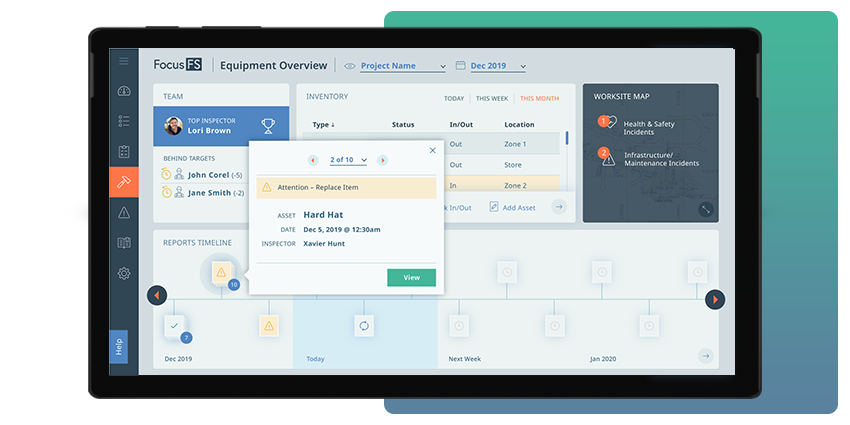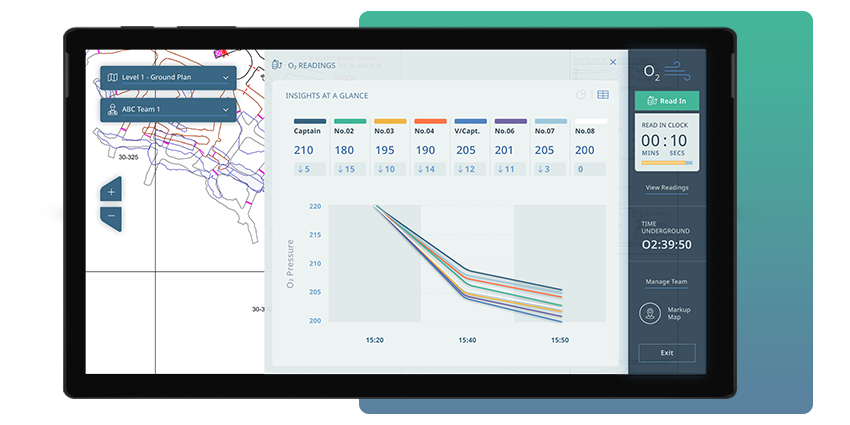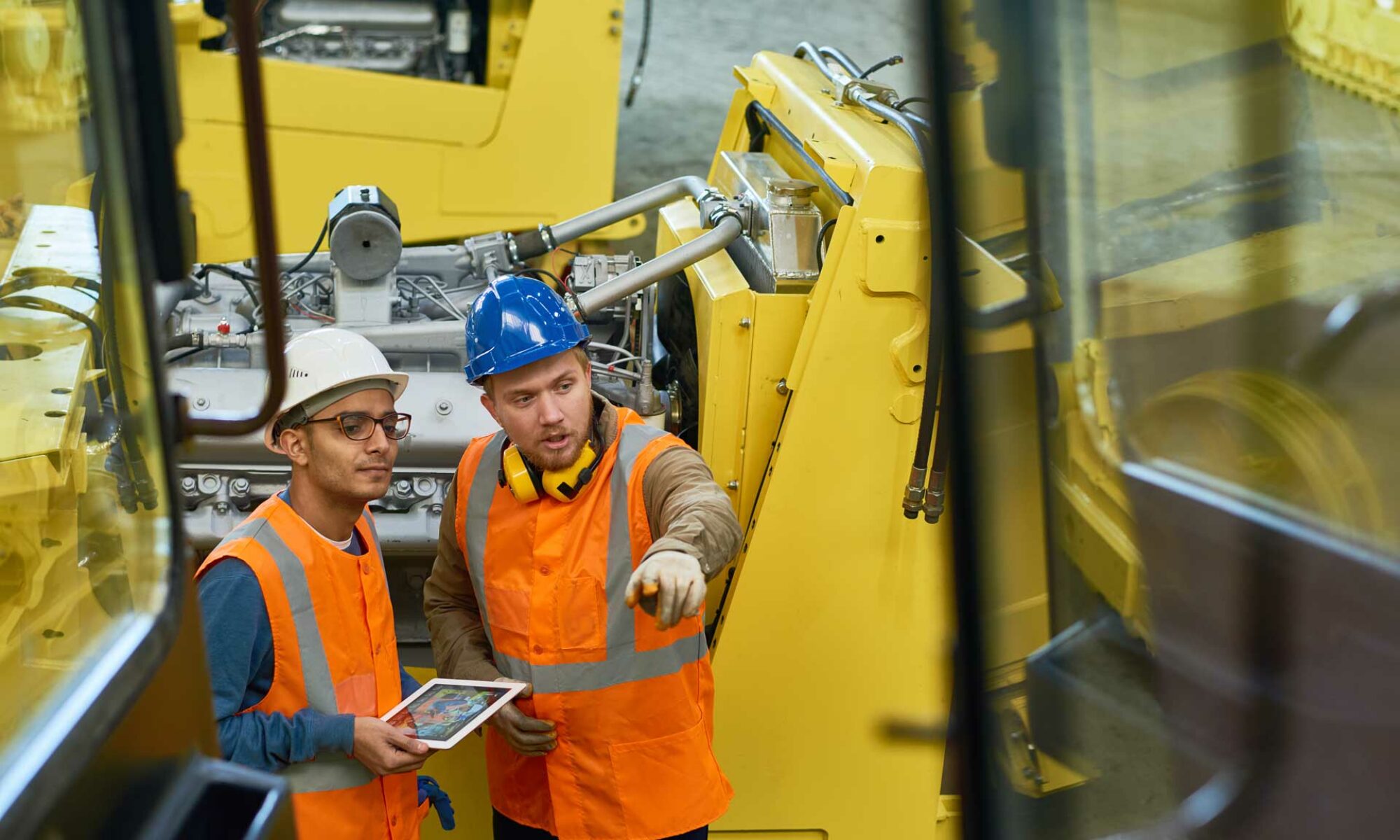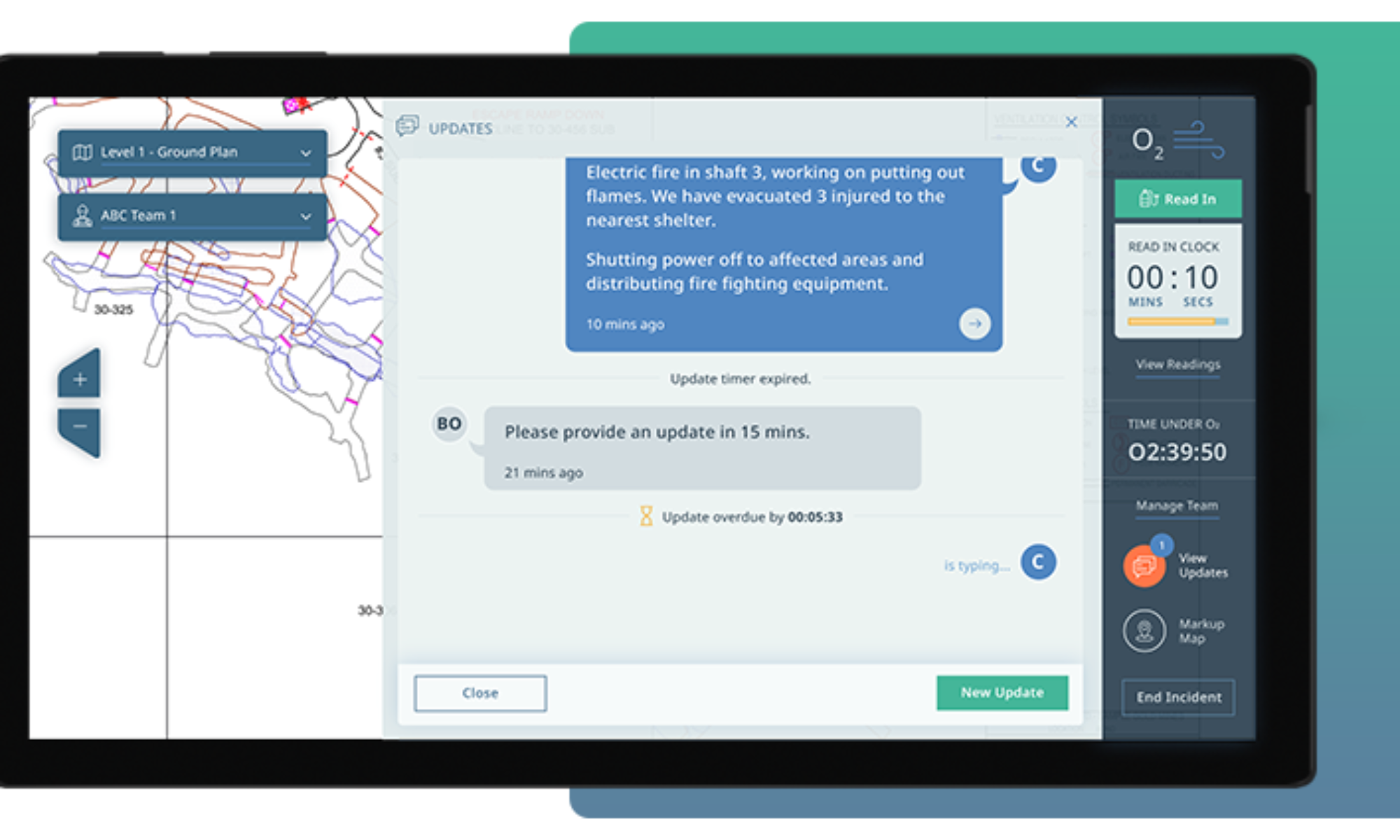Blog
Mine Rescue Software: Managing Teams & Equipment
August 5, 2022

For mine operators around the globe, nothing is more important than worker health and safety. So why has the mining industry been slower to adopt digital safety applications than other industries like energy and construction? In this blog series, we’ll explore some of the mining industry’s challenges and feature solutions delivering on the next generation of digital safety. Click here to read the introductory post.
In the previous post, we discussed issues with paper maps and how digital technology can alleviate these problems. Of course, mapping is just one of the many tasks mine rescue team captains, support personnel, and mine officials carry out before, during, and after an emergency.
A mine emergency response plan (MERP) outlines roles and responsibilities, as well as procedures and plans of action, involved in effective and efficient emergency situation management. While specific details (and terminology) can vary between mine types and jurisdictions, let’s take a closer look at some of the common duties related to managing mine rescue teams and equipment.
Designated members of the mine’s management team commonly ensure:
- Mine rescue team members are part of the mine’s emergency notification plan,
- Each mine rescue team member has relevant certifications and training completed,
- Onsite mine rescue equipment is properly managed (including maintaining usage records and inspection statuses for every piece),
- Equipment, apparatus, and related resources are readily available for deployment.
When an emergency happens, the briefing officer provides the mine rescue team captain with such vital information as:
- Maps showing relevant information, including travel routes, location of refuge stations, hot zones, cooling areas, and so on,
- Underground equipment locations, including ventilation and fans, timbered areas, first aid supplies, fire hoses, backup equipment, etc.,
- Incident details, such as the type of incident, location details, missing personnel, actions already taken, potential heat exposures, specialized skills required, etc.
In addition to receiving instructions from the briefing officer, the team captain commonly needs to:
- Confirm each mine rescue team member is in fit condition and ready to go,
- Verify all team member’s breathing apparatus and auxiliary equipment are properly prepared and tested (and check that everything is functioning once each member is under 02),
- Ensure rescue equipment and tools, communication devices, and other necessary items are operational and ready to mobilize,
- Synchronize watches with the team and emergency personnel; confirm the map person has the correct maps.
Once the team has gone underground, the captain then needs to:
- Maintain regular communications with the fresh air base or command centre,
- Confirm air quality tests are performed, and each breathing apparatus is functioning properly throughout the mission,
- Ensure the team has rest breaks and is checked on periodically; keep track of how long team members have been under 02; return the team to fresh air base safely,
- Keep a log throughout the mission (including timelines, travel routes, equipment usage, etc.).
At the same time, above-ground personnel should:
- Collect and analyze data received, then make qualified decisions affecting the wellbeing of all underground personnel and the mine itself,
- Ensure equipment sent underground to the rescue team has been tested,
- Check that main/backup communication channels remain operational,
- Schedule and assign tasks for the backup team,
- Keep a record of all data received and sent.
Once a team returns to the fresh air base, the team captain can share information (such as ground conditions, available equipment, etc.), which can be relayed to the backup team. Even more detailed information about what the rescue team experienced and what equipment was used can also be discussed during debriefings.
As the above examples illustrate, many processes and procedures are involved when overseeing mine rescue personnel and equipment, which can become especially cumbersome as your mine operation develops and expands.
If there was only a way to simplify and organize everything with one user-friendly system.
Digitize and Improve
The Focus FS Emergency Response Solution was purpose-built for the mining industry and greatly improves the management of mine rescue equipment and teams before, during, and after an emergency.
Our system allows authorized personnel to quickly add and maintain user profiles, including profiles for individual mine rescue team members. Insightful dashboards help you track and confirm that everyone has up-to-date training and certifications. User profiles also help to verify those with specialized training, so it’s easy to know who’s available for a particular task at a moment’s notice.
The same goes for emergency response equipment. Once a piece has been added to the system, verification scans can quickly confirm its location, usage history, and other relevant data to ensure it’s fit for service. Automated check-ins and check-outs ensure equipment supervisors always know what’s in use. Remote inventory overviews and alerts help them know when to re-stock vital pieces of equipment.
When an emergency alarm is sounded, our system can send digital notifications to designated personnel on the emergency notification list. Detailed information can also be quickly sent out to rescue teams, first aid crews, and mine officials to let them know relevant information as soon as it’s available.
At the same time, personnel such as supply clerks can use the system to verify and prepare equipment and supplies needed by the rescue team and others. The system automatically keeps a record of what’s been issued or returned, helping personnel to competently handle and distribute equipment and supplies.
As a briefing officer and mine rescue team captain meet to discuss the mission, they can quickly review the location of underground equipment on up-to-date digital maps. They can also discuss any specialized skills that might be required, and then confirm which team member has those capabilities by reviewing user profiles.
If breathing apparatus are required for a mission, apparatus ID numbers can be assigned to team members in the system, as well as 02 pressure readings and pass/fail confirmation. The system also allows for equipment types and quantities to be assigned to a team, ensuring they have what they need before going underground.
Once the mission is underway, the team captain can easily set 02 read-in timers and then input readings into the system so they’re instantly viewable to above-ground personnel. The captain can also add updates, notes, and photos to share with aboveground officials.
The system automatically saves and syncs all inputted data, so everyone involved in the mission is aware of what’s happening at all times. Even if an internet connection is lost, the system continues to collect data and then re-syncs when the connection resumes.
This provides decision-makers with the maximum amount of information to make timely assessments, such as whether additional equipment needs to be sent underground or if a backup team needs to be mobilized.
Once a mission is completed and the emergency has ended, system data can be used to help with internal or external investigations, final reports, and legal record-keeping. It can also be used for corrective action management, equipment inspections and re-certifications, and inventory administration.
Whether it’s routine day-to-day operations or the most stressful of emergency situations, managing your mine rescue equipment and mine rescue teams is remarkably efficient with the Focus FS Emergency Response Solution.
The next blog post in this series looks deeper into reporting. Stay tuned!
—
Learn More
The Focus FS Emergency Response Solution was purpose-built for safer mine rescue operations.
Preview the Emergency Response Solution for Mine Rescue
—
Subscribe to our newsletter
hbspt.forms.create({
region: “na1”,
portalId: “19922270”,
formId: “fb64bf68-e341-4ba5-9fea-f6ba9ecb5a1d”
});



